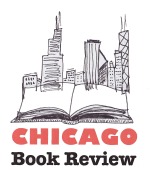 Butterfly Stitching
Butterfly Stitching
A novel
by Shermin Nahid Kruse
An Iranian mother and daughter endure decades of oppression and war in a story that masterfully juxtaposes the beautiful—vibrant clothing, painting, music, and forbidden love—and the terrible—death, bombs, and secret police.
Shermin Nahid Kruse’s Butterfly Stitching begins in 1966. Samira, a fourteen-year-old peasant and a gifted painter, is forced into an arranged marriage with Davoud, a wealthy supporter of the pro-Western Shah of Iran. Davoud already has a first wife, who also lives in his sprawling home, and two children Samira’s age.
 Through the education Davoud buys her, Samira comes to understand and to have her own informed opinion of Iran’s political situation leading into the 1979 revolution and the subsequent Iran–Iraq war, that stretches from 1980 to 1988.
Through the education Davoud buys her, Samira comes to understand and to have her own informed opinion of Iran’s political situation leading into the 1979 revolution and the subsequent Iran–Iraq war, that stretches from 1980 to 1988.
Davoud also gifts Samira with a studio in which to paint, and she is afforded a luxurious lifestyle. However, as she matures, she comes to see that despite her great wealth, she is still a woman in Iran, in a plural marriage, and thus is not free.
Samira finds it impossible to reconcile Davoud’s professions of love with his often cold manner and his demands that she dress in Western clothes. He forbids her to wear a veil, despite its importance to her as Muslim woman.
Samira goes on to make a series of complex life choices that forever alter her relationship with Davoud and in which she turns her back, at least in private, on the religious edicts set by the Ayatollah Khomeini.
Beginning with the Ayatollah Khomeini’s ascent to power in 1979, things like music, dancing, and poetry—the things that make life beautiful—are banned in Iran as symbols of Western influence. Women and girls are required in public to wear the hejab, or full veil, covering their head and face. In the 1980s, Samira teaches her young daughter, Sahar, to be true to herself despite such oppression. But defying Iranian law costs Samira and her family a terrible price.
Some of the most haunting scenes in Butterfly Stitching are told from Sahar’s point of view. In 1988, for instance, we see through her nine-year-old eyes a public execution carried out in broad daylight. Yet Sahar’s parents defiantly hold parties in their Tehran apartment that illegally offer wine, poetry recitations, Western music, and raucous dancing on a brightly flowered Persian rug. Their living room doubles as Samira’s art studio.
Throughout her life, Samira retains possession of a head scarf which she dyed a vibrant red before her marriage to Davoud, and onto which her mother stitched orange butterflies. It is not always legal or prudent to wear it, but she keeps it and ultimately passes it to her daughter. Other items—a music box, a bright green ribbon, and passionate love letters—also figure into the story.
Kruse’s writing is generally superb, but a few key scenes and passages are transcendent, as when Samira teaches her children “that every person has the power to dye their own world with whatever colors they choose.”
Later, in a bloody moment, Sahar unforgettably mentions their apartment’s colorful Persian rug, which she says, “had borne the footsteps and tears of their family for generations (and now) blushed like a shy girl.” She calls a group of dark-clad murderers “black smoke.” Samira’s paintings, meanwhile, complexly mirror in her choice of technique and mediums, such as broken glass, the country’s chaotic state.
Dinner conversation over the decades is deeply and intelligently political, as Samira and those around her discuss the forces that are transforming their country. To Davoud’s parties in the 1970s are invited high-ranking backers of the Shah. Later, in the 1980s, the fact that the United States once backed the Shah and now is backing Iraq in a brutal, drawn-out war against them leaves Samira angry and disillusioned.
Fitting in Iran’s history is just one thing—among many—that the author does exceptionally well; its placement is smooth and unobtrusive, typically neatly slipped in during scenes in which characters are enjoying food, alcohol, and personal conversation.
Kruse, who was born in Iran and is now an attorney in Chicago, demonstrates far more than just an academic understanding of Iranian history. She has clearly gained her knowledge through life experience. Such a book, with its myriad small, scene-setting details, could be written only by someone who intimately lived it.
Portions of Butterfly Stitching are alternately penned in novel form and as a screenplay, reflecting the plot in which Sahar, as an adult, writes her mother’s life story in that fashion. The transitions between the novel and screenplay sections are smooth and do not detract from the story.
Butterfly Stitching is an exquisitely penned, richly authentic novel about the power of beauty to cut through the deepest darkness.
May 2014, Water Bird Press
Fiction
$18, paperback, 374 pages
ISBN: 978-0-9960-5020-3
—Reviewed by Karyn Saemann



Powerfully compelling and one heck of a first novel for Kruse. Can’t wait to read her next book!
LikeLike
Pingback: CBR’s Best Books of 2014 | Chicago Book Review